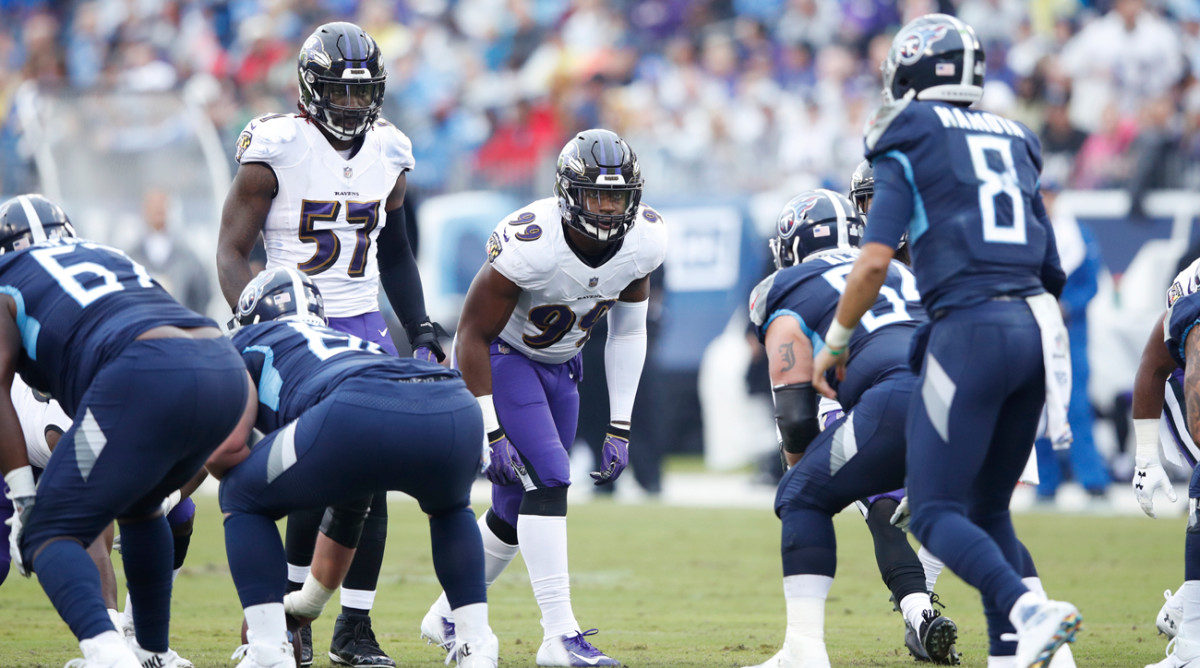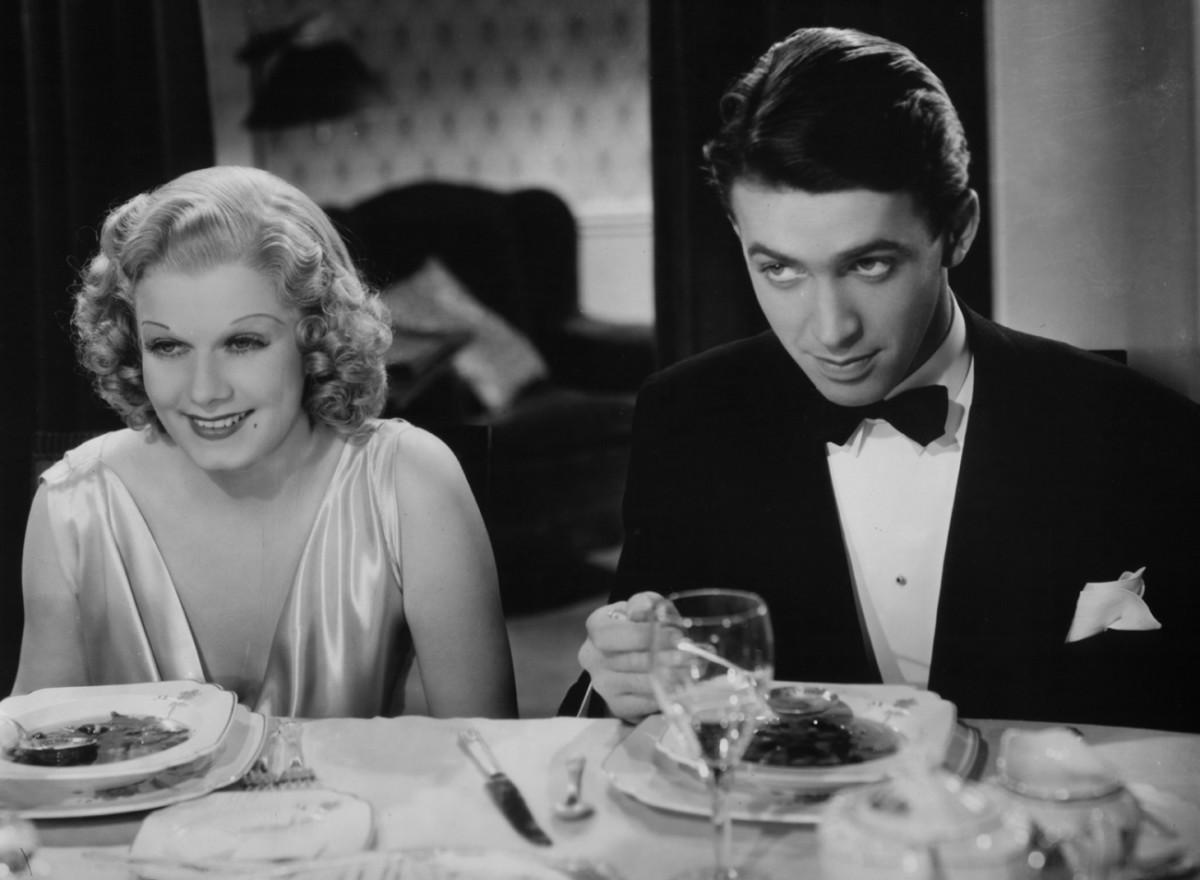How to Remake NFL Defenses? The Ravens Have a Blueprint

NFL offensive production is at an all-time high, and a natural market correction does not seem imminent. The league is flush with quality young quarterbacks and wide receivers. Perhaps more importantly, there’s a flock of innovative young offensive head coaches and coordinators. For the “market” to change, defenses must change.
For a blueprint on how, look no further than the Baltimore Ravens, who are coming off an 11-sack performance at Tennessee and rank first in points and yards allowed. When Marcus Mariota approached the line of scrimmage last Sunday, he’d see Ravens defenders roaming around, defensive backs and linebackers in pass rush positions or one side of the formation overloaded with extra defenders. Rarely did Mariota see defenders in traditional set positions; it was mostly undefined, amoeba looks.
Many of these looks involved Baltimore’s safeties—of which, by the way, there were three: Eric Weddle, Tony Jefferson and Anthony Levine, who often subbed in for a linebacker. Having three safeties gave the Ravens defense more speed and coverage versatility.

More NFL teams are employing extra safeties and presenting undefined defensive looks, but not with the frequency of Baltimore. And you could argue that the Ravens themselves need to do it more. (They won’t face an offense with a banged-up QB and limited receivers like Tennessee’s every week.) As it stands, these undefined, hybrid defensive looks are mostly reserved for third downs. But what if defenses started doing them on first and second down? It’s a radical—and maybe even overly extreme—notion, but with offensive production soaring, defenses must think radically.
First and second down are where today’s cutting-edge passing offenses generate big plays. Defensive coaches don’t like three-safety packages and amoeba fronts on early downs because it can leave a defense unsound against the run. This is where thinking must evolve. For decades, coaches were taught that sturdy defense began with stopping the run. But once upon time, society believed that efficient transportation began with having a healthy horse. Things change. If the NFL really is a passing league—which everyone agrees it is—your defense must begin with stopping the pass.
What makes innovative offensive schemes like Sean McVay’s Rams, Kyle Shanahan’s 49ers and Andy Reid’s Chiefs lethal is that they design passes that punish defenders for correctly playing their run responsibilities.
Yes, if defenders lined up in pass rushing looks on early downs, they might get gashed on a quick-hitting run play. But defenses already run that risk against the quick-strike passing game. A receiver who catches a slant in stride or a stick throw outside is often one broken tackle away from reaching the open field. Besides, can we be sure that offensive play-callers will continue to run the ball even if the run looks are favorable? The passing game is so much sexier. After the Rams’ narrow victory at Denver, even McVay had to criticize himself for not sticking enough with the run. He got away from it despite having Todd Gurley and facing what’s now the league’s 32nd-ranked rush defense. In private conversations, I’ve heard some top offensive coaches flat-out say they don’t like running the ball.
They might like running the ball even less if the defense is in an unpredictable pass-rushing look. For a run play to work, a quarterback, running back, five offensive linemen and often a tight end must all see a defensive front the same way. That’s how they sort blocking assignments and identify possible running lanes. Against traditional defensive fronts, it’s easy—especially since those are the fronts that running plays are built specifically to exploit. But if the defensive front becomes malleable and unpredictable? It might have weak spots, sure, but there’s also a much greater chance that one of the offensive linemen or ball-handlers will see it differently than everyone else does. This leads to running game breakdowns or, more likely, quarterbacks simply checking out of run plays and into the short passing plays that the amoeba front is designed to combat. At the very least, the offense feels a twinge of hesitancy when snapping the ball. Hesitancy has a way of quickly building into outright doubt and confusion. That’s what the Ravens did to Mariota and the Titans.
Doubt and confusion can manifest themselves when the defense starts changing its looks not just before the snap, but after it. That’s the other beauty of an amoeba front: It’s more conducive to disguising your coverages, especially underneath. From those fronts, a defense can always threaten a heavy blitz, easily rush five or just as easily rush only three, flooding the coverage with eight defenders. Quarterbacks must be prepared either to play fast or, if it’s a three-man rush, to suddenly play slow. In this delicate balance, it’s easy to start playing off-schedule.
Of course, it’s also easy to theorize about all the things a defense should do; executing those things can be a different story. Last Sunday against Patrick Mahomes and the Chiefs, New England employed many of the tactics described above. The Pats coaxed Mahomes into a few early incompletions and turnovers but ultimately gave up 40 points. But maybe that 40 points would have been 50 if Mahomes had faced predictable, static run-stopping fronts early in the game. And maybe 40 points would have been only 30 if Mahomes had seen New England’s disguised passing-down fronts on more first and second downs.
Subscribe to The MMQB Podcasts and get Andy Benoit’s analysis on The NFL Deep Dive Show every Thursday
TWEET ELABORATION
Lions WR Kenny Golladay has a chance to become a top-5 WR. Long and athletic.
— Andy Benoit (@Andy_Benoit) October 12, 2018
Besides a great body and athleticism, Golladay has the wherewithal to control it. He’s patient with the ball in the air, and there’s a smooth, almost delayed feel to some of his downfield motions. Randy Moss was like that. Golladay isn’t quite as electric as Moss, but we’re talking about a receiver with traits that can’t be coached.
Episode 1 available now: An exclusive narrative podcast series from SI, re-examining the murder of Titans great Steve McNair. Subscribe on iTunes, or wherever you download your podcasts.
BEARS FANS NEED NOT WORRY
The Bears blew a game in Miami because their linebackers and safeties forgot how to tackle down the stretch. That happens. There’s still a lot to love about this defense. Khalil Mack affects games even when he’s quiet, like he was at Miami, battling a bad ankle. Akiem Hicks remains one of the most outstanding defensive tackles in football. First-round linebacker Roquan Smith is playing faster each week. Cornerback Kyle Fuller is one of the game’s best vertical route defenders. And the men filling the spots around these stars are solid and operate in a scheme that’s extremely nuanced. Chicago will be in playoff contention come December because of this defense.

BUCS CHANGE AT DEFENSIVE COORDINATOR
Dirk Koetter acknowledged how difficult it was to fire Mike Smith, a longtime colleague who was once Koetter’s boss in Atlanta. But a change had to be made. The Bucs had become stale and predictable in their foundational zone coverages. The question now: How many wrinkles can replacement coordinator Mark Duffner install? Typically a zone-based defense can’t suddenly start playing a bunch of man-to-man. There are too many subtle rules and differences from one man coverage to the next. Whatever Duffner does, it should leverage the talent and versatility of three-down ’backers Lavonte David and Kwon Alexander, and focus on generating a more disruptive pass rush.
NONFOOTBALL ITEM OF THE WEEK

When my dad was young, he attended a small event that featured world-renowned actor Jimmy Stewart. For the event, my dad and 30 or 40 other people attended a dinner. There was a long table, and Jimmy Stewart sat at the head of it. My dad sat near the other end.
Flash forward several decades. My aunt was talking about the movie It’s a Wonderful Life, and my dad said to her, in these exact words, “I had dinner with Jimmy Stewart once.” I felt a twinge of resentment at this wording, especially since my dad didn’t offer pertinent details—the size of the table, number of diners – until he was pressed. Was I wrong to feel this way? What’s the group size (or table size) cutoff for being able to say you had dinner with someone? Or better yet, what’s the criteria that constitutes “having dinner with” someone?
2019 NFL Mock Draft 1.0: Giants Take QB No. 1 in First Projections
I’ll get the ball rolling: To me, it only qualifies as “having dinner with” a person if both parties feel compelled to say some sort of personalized goodbye before parting. And both parties must be able to immediately recognize each other if they cross paths the next day. I doubt Jimmy Stewart looked my father in the eye and said goodbye before leaving, and I doubt he would have recognized my father the next day.
Let’s have a healthy dialogue and see if we can’t form some societal guidelines here. Send your thoughts to me at AndyBenoitNFL@gmail.com. and, just as with the baseball locker room celebration discussion, I’ll publish the best responses here next week.
Question or comment? Email us at talkback@themmqb.com.
